
Victoria University is a federated university, which forms part of the wider University of Toronto. The school was founded in 1836 by the Wesleyan Methodist Church of Canada as a nonsectarian literary institution. From 1841 to 1890, Victoria operated as an independent degree-granting university, before federating with the University of Toronto in 1890, relocating from Cobourg to Toronto.
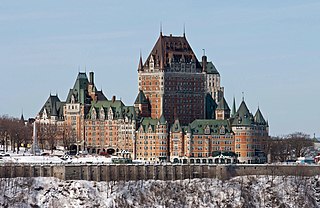
The Fairmont Le Château Frontenac, commonly referred to as the Château Frontenac, is a historic hotel in Quebec City, Quebec, Canada. The hotel is situated in Old Quebec, within the historic district's Upper Town, on the southern side of Place d'Armes. The Château Frontenac was designed by Bruce Price, and was built by the Canadian Pacific Railway company. The hotel is managed by Fairmont Hotels and Resorts.

Exhibition Place is a publicly owned mixed-use district in Toronto, Ontario, Canada, located by the shoreline of Lake Ontario, just west of downtown. The 197-acre (80 ha) site includes exhibit, trade, and banquet centres, theatre and music buildings, monuments, parkland, sports facilities, and a number of civic, provincial, and national historic sites. The district's facilities are used year-round for exhibitions, trade shows, public and private functions, and sporting events.

Massey Hall is a performing arts theatre in Toronto, Ontario, Canada. Opened in 1894, it is known for its outstanding acoustics and was the long-time hall of the Toronto Symphony Orchestra. An intimate theatre, it was originally designed to seat 3,500 patrons, but after extensive renovations in the 1940s, it now seats up to 2,765. It has an extensive history of concerts by artists of many musical genres which continues today.
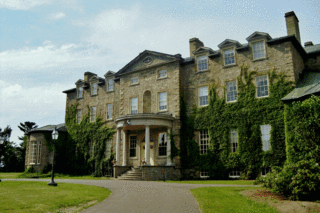
Government House is the official residence of the Lieutenant Governor of New Brunswick, as well as that in Fredericton of the Canadian monarch. It stands on a 4.5 ha estate along the Saint John River in the provincial capital at 51 Woodstock Road; while the equivalent building in many countries has a prominent, central place in the territorial capital, the site of New Brunswick's Government House is relatively unobtrusive within Fredericton, giving it more the character of a private home.
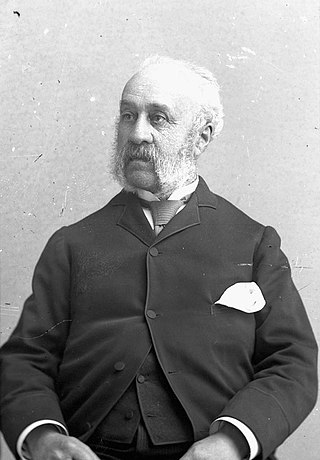
Thomas Fuller was an English-born Canadian architect. From 1881 to 1896, he was Chief Dominion Architect for the Government of Canada, during which time he played a role in the design and construction of every major federal building.
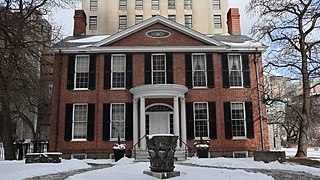
Campbell House is an 1822 heritage house and museum in downtown Toronto, Ontario, Canada. It was built for Upper Canada Chief Justice Sir William Campbell and his wife Hannah. The home was designed for entertaining and comfort, and constructed at a time when the Campbells were socially and economically established and their children had grown to adulthood. The house is one of the few remaining examples of Georgian architecture left in Toronto and is constructed in a style in vogue during the late Georgian era known as Palladian architecture.

1 Spadina Crescent, also known as the Daniels Building, is an academic building that houses the John H. Daniels Faculty of Architecture, Landscape, and Design at the University of Toronto in Toronto, Ontario, Canada. The building is situated in the centre of a roundabout of Spadina Avenue, north of College Street. Its location provides a picturesque vista looking north up Spadina Avenue; it is an axial view terminus for Spadina Avenue.

Government House was the official residence of the lieutenant governor of Upper Canada and Ontario, Canada. Four buildings were used for this purpose, none of which exist today, making Ontario one of four provinces not to have an official vice-regal residence.

Factory Theatre is a theatre in Toronto, Ontario, Canada. It was founded as Factory Theatre Lab in 1970 by Ken Gass and Frank Trotz, and it was run for almost 20 years by Dian English.

The Garden District is a neighbourhood in downtown Toronto, Ontario, Canada. The name was selected by the Toronto East Downtown Residents Association (TEDRA) in recognition of Allan Gardens, an indoor botanical garden located nearby at the intersection of Carlton and Jarvis Streets. The Garden District was officially designated by the Mayor and Toronto City Council in 2001, while TEDRA has since been renamed the Garden District Residents Association. Part of the neighbourhood is within official City of Toronto neighbourhood of Moss Park.

Wycliffe College is an evangelical graduate school of theology at the University of Toronto. Founded in 1877 as an evangelical seminary in the Anglican tradition, Wycliffe College today attracts students from many Christian denominations from around the world. As a founding member of the Toronto School of Theology, students can avail themselves of the wide range of courses from Canada's largest ecumenical consortium. Wycliffe College trains those pursuing ministry in the church and in the world, as well as those preparing for academic careers of scholarship and teaching.

George Brown House is a historic building in the Grange Park neighbourhood of Toronto, Ontario, Canada. It was home to Father of Confederation, Reform Party politician and publisher George Brown. Its current address is 186 Beverley Street.

There are two castings of the well-known statue of Timothy Eaton, the famous Canadian retailer: one in Toronto, Ontario, the other in Winnipeg, Manitoba.
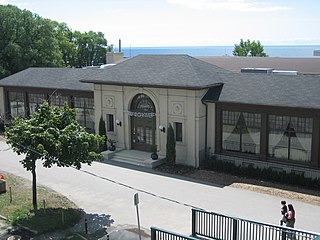
Palais Royale is a dance hall in Toronto, Ontario, Canada, located on Lake Shore Boulevard at the foot of Roncesvalles Avenue on Lake Ontario. Originally built as a boat works, it became notable as a night club in the now-defunct Sunnyside Amusement Park, hosting many prominent 'big band' jazz bands. Since the Park's demolition, the building has ceased to be a nightclub, being used for special occasions and concerts. It has recently been remodeled and is in use for special occasions and meetings.
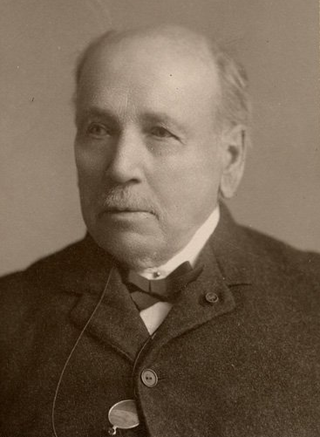
Charles Baillairgé was an architect, land surveyor, civil engineer, and an author.

The Alexander Chapoton House is a Queen Anne style row house located at 511 Beaubien Street in Downtown Detroit, Michigan. It was listed on the National Register of Historic Places and designated a Michigan State Historic Site in 1980.

The North University Park Historic District is a historic district in the North University Park neighborhood of Los Angeles, California. The district is bounded by West Adams Boulevard on the north, Magnolia Avenue on the west, Hoover Street on the east, and 28th Street on the south. The district contains numerous well-preserved Victorian houses dating back as far as 1880. In 2004, the district was added to the National Register of Historic Places.
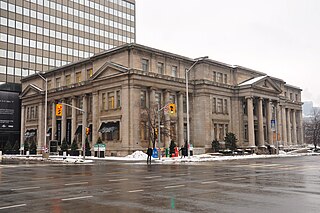
The Lillian Massey Building is a Neoclassical building located in Downtown Toronto, at the southeast corner of Queen's Park and Bloor Street along the Mink Mile and across from the Royal Ontario Museum. It was designed by architect George Martell Miller (1855–1933) and built between 1908 and 1912 for the University of Toronto's Household Science program created by Lillian Massey Treble, daughter of wealthy Canadian business man, Hart Massey. It presently houses the offices of the University of Toronto's Department of Classics and Centre for Medieval Studies and the offices of the University of Toronto's Division of University Advancement. Part of the building previously housed Club Monaco’s flagship retail store until 2021.





















